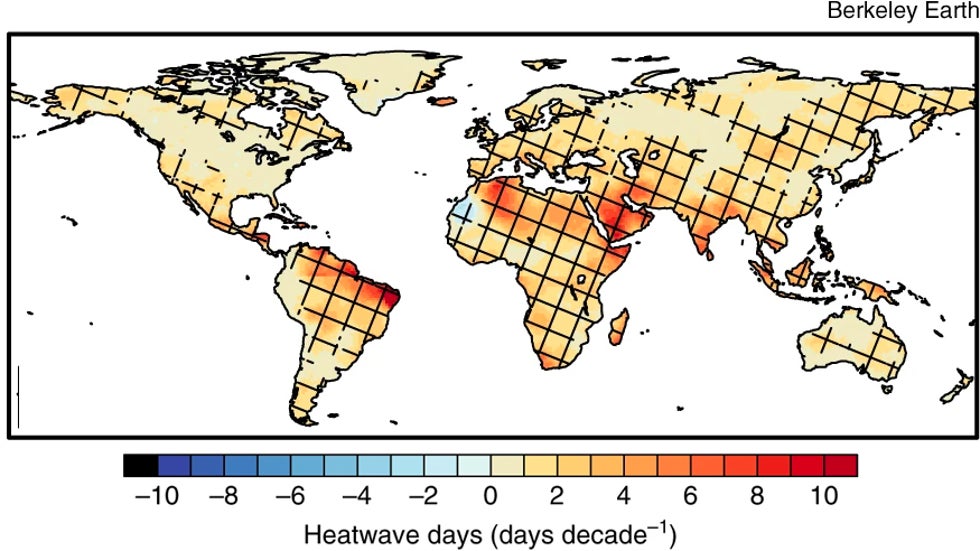 The change in seasonal heatwave days per decade 1950 to 2014.
The change in seasonal heatwave days per decade 1950 to 2014.Heat waves have become longer and more frequent in much of the world since the 1950s because of human-caused climate change, according to a new study.
The study, published in Nature Communications, examined heat waves at a regional level from 1950 to 2017. It found that areas like the Mediterranean, the Amazon, northeast Brazil and western Asia have seen significant increases in the number of heat wave days per decade.
“Not only have we seen more and longer heatwaves worldwide over the past 70 years, but this trend has markedly accelerated,” said lead author Dr. Sarah Perkins-Kirkpatrick in a press release from the ARC Centre of Excellence for Climate Extremes.
A majority of the world's regions saw at least one extra heatwave day per decade from 1950 to 2017. That number climbs to 3 to 5 more days per decade in some lower-latitude areas.
Heat waves in the Mediterranean increased by two days per decade from 1950 to 2017, the study said. When examining more recent decades from 1980 to 2017, that trend jumped to an increase of 6.4 heat wave days per decade.
“Climate scientists have long forecast that a clear sign of global warming would be seen with a change in heat waves,” said Perkins-Kirkpatrick.
The study also mentioned that heat wave intensity is the only heat wave metric that hasn't worsened dramatically. That's because the average temperature of heat waves are now measured over a longer period of time, which makes any changes to the intensity hard to detect.
The Weather Company’s primary journalistic mission is to report on breaking weather news, the environment and the importance of science to our lives. This story does not necessarily represent the position of our parent company, IBM.
The Weather Company’s primary journalistic mission is to report on breaking weather news, the environment and the importance of science to our lives. This story does not necessarily represent the position of our parent company, IBM.

No comments:
Post a Comment